We are responsible for reducing the risk of the introduction of exotic pests or diseases that may affect our agricultural and horticultural industries, and our unique environment. This page provides information about importing fertiliser, to ensure that the risk of introducing an exotic pest or disease via this commodity is managed effectively.
What is fertiliser?
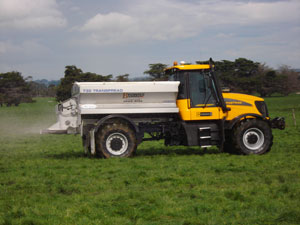 Fertiliser is defined as a growth enhancer, promotant or regulator that aids plant growth. Fertilisers imported into Australia can be grouped into three main groups:
Fertiliser is defined as a growth enhancer, promotant or regulator that aids plant growth. Fertilisers imported into Australia can be grouped into three main groups:
- Chemical fertiliser, which is a product that is the result of a manufacturing process
- Mined fertiliser, which is a natural, non-organic product mined from the earth itself
- Organic fertiliser, which may be made of aquatic animal, terrestrial animal, avian, or microbial origin.
Why is the department interested in fertiliser?
Imported fertiliser that is contaminated with soil, animal or plant based contaminants can create a pathway into Australia for exotic pests and diseases.
There is a high potential for the establishment of an exotic pest or disease as fertiliser is applied directly to soil. To address this risk, the department has developed import policies and permit conditions for importing fertiliser.
What contaminants can be found in fertiliser?
Imported consignments may be contaminated with biosecurity risk material such as:
- live insects
- seed
- soil
- plant matter (such as leaves)
- animal matter (such as faeces and feathers).
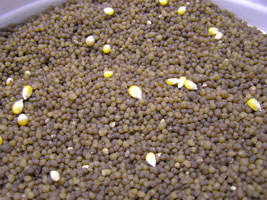
Imported fertiliser showing seed contamination
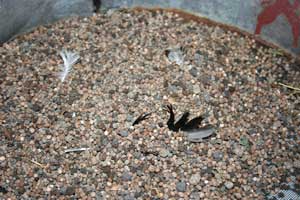
Imported fertiliser showing contamination with feathers
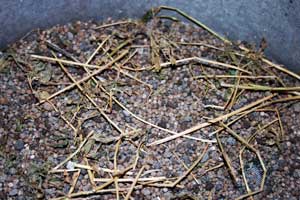
Imported fertiliser showing plant material contamination
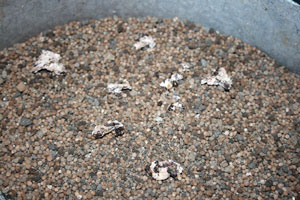
Imported fertiliser showing contamination with bird faeces
Because these contaminants have the potential to introduce exotic pests and diseases into Australia, there is a legislative requirement for most importers to have specific permission to import fertiliser into Australia.
How can fertiliser be imported to Australia?
Fertiliser can be imported:
- as bulk in ship holds or containers
- in bags of less than 100kg
- in bags of 100kg or more
- samples, or
- as a liquid.
Each of these modes of importation has specific import policies, based on a risk assessment of the fertiliser pathway from the point of manufacture to arrival in Australia. The department will apply import conditions based on the potential for biosecurity contaminants to enter the fertiliser pathway.
Import permits
Fertiliser is a conditionally non-prohibited good. Most fertilisers require import permits, and these must be obtained prior to import.
Refer to the Biosecurity Import Conditions system (BICON) for more information on import permits.
What happens when fertiliser lands in Australia?
The department inspects the fertiliser when it lands in Australia. This inspection must take place either in the vessel hold or at a registered Approved Arrangements site . Charges apply for this service.
Before applying for an import permit, prospective importers need to ensure that they have arranged for the fertiliser to be unpacked or stored at one or more Approved Arrangement site in each port of discharge if needed. The approved arrangement sites need to be of appropriate classification to receive fertiliser, and need the storage capacity to handle the volume of product being imported.
What are my responsibilities as an importer?
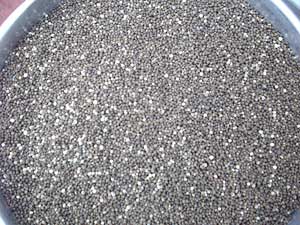
It is in the importer's interest to ensure that consignments
are free from biosecurity contamination.
Importers are asked to ensure quality control systems are in place offshore from the point of manufacture through to the point of importation in Australia and during handling and storage of the product. These systems must eliminate the potential for contamination to enter the fertiliser pathway.
To expedite the biosecurity clearance process, it is in the importer's interest to ensure that consignments are free from biosecurity risk material.What happens if the consignment is contaminated with biosecurity risk material?
If contaminants that are quarantine risks are detected in consignments, further action will be necessary.
This action is undertaken at the importer's expense.
Where do I find further information?
- Importing chemical and mined fertiliser, including the department's inspection policies
- Importing organic fertiliser
- Use BICON for more information about importing other types of fertiliser.
Contact us
If you require further information please contact the Client Contact Group - Canberra:
Phone: 1800 900 090 Email: Imports
